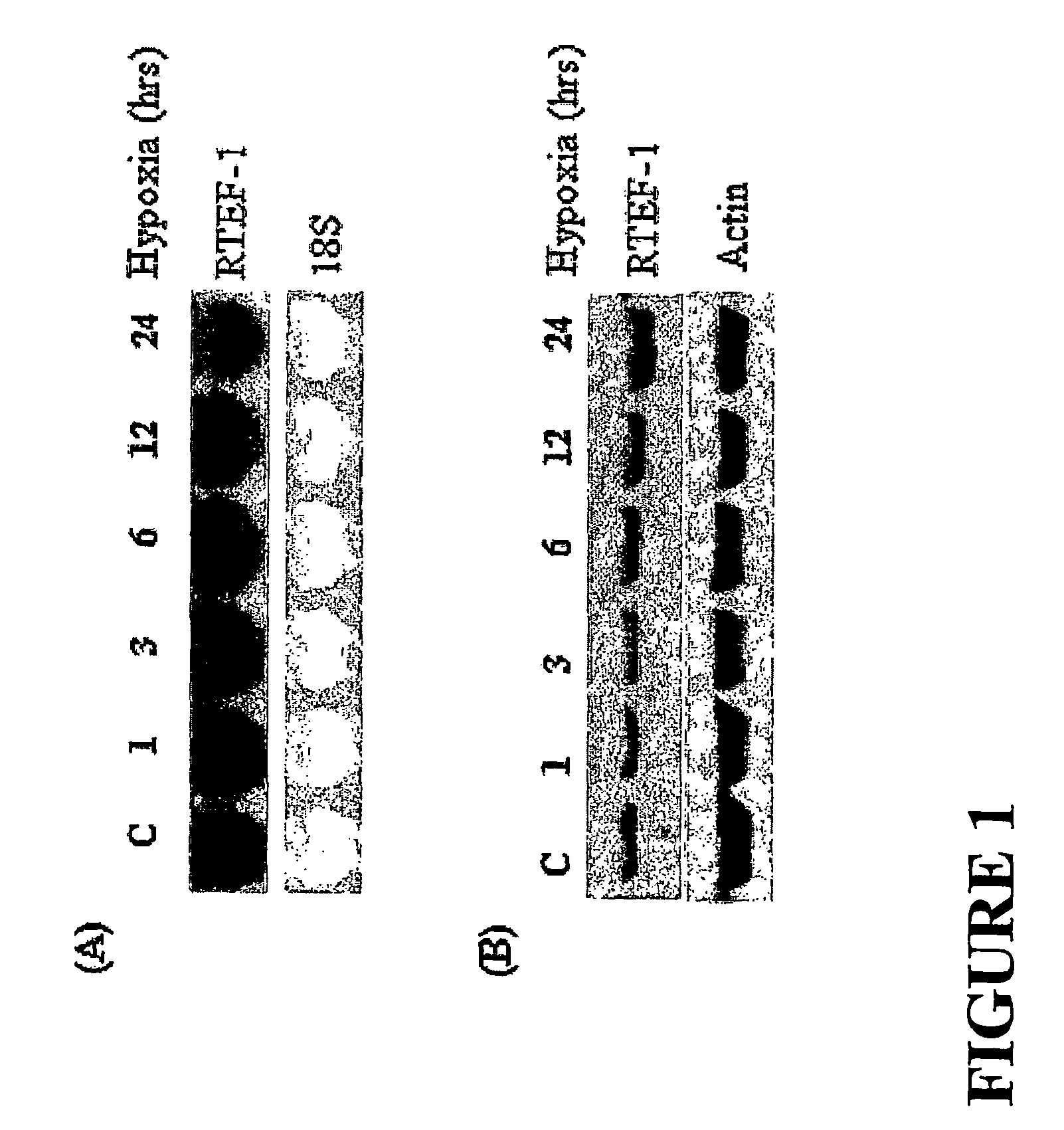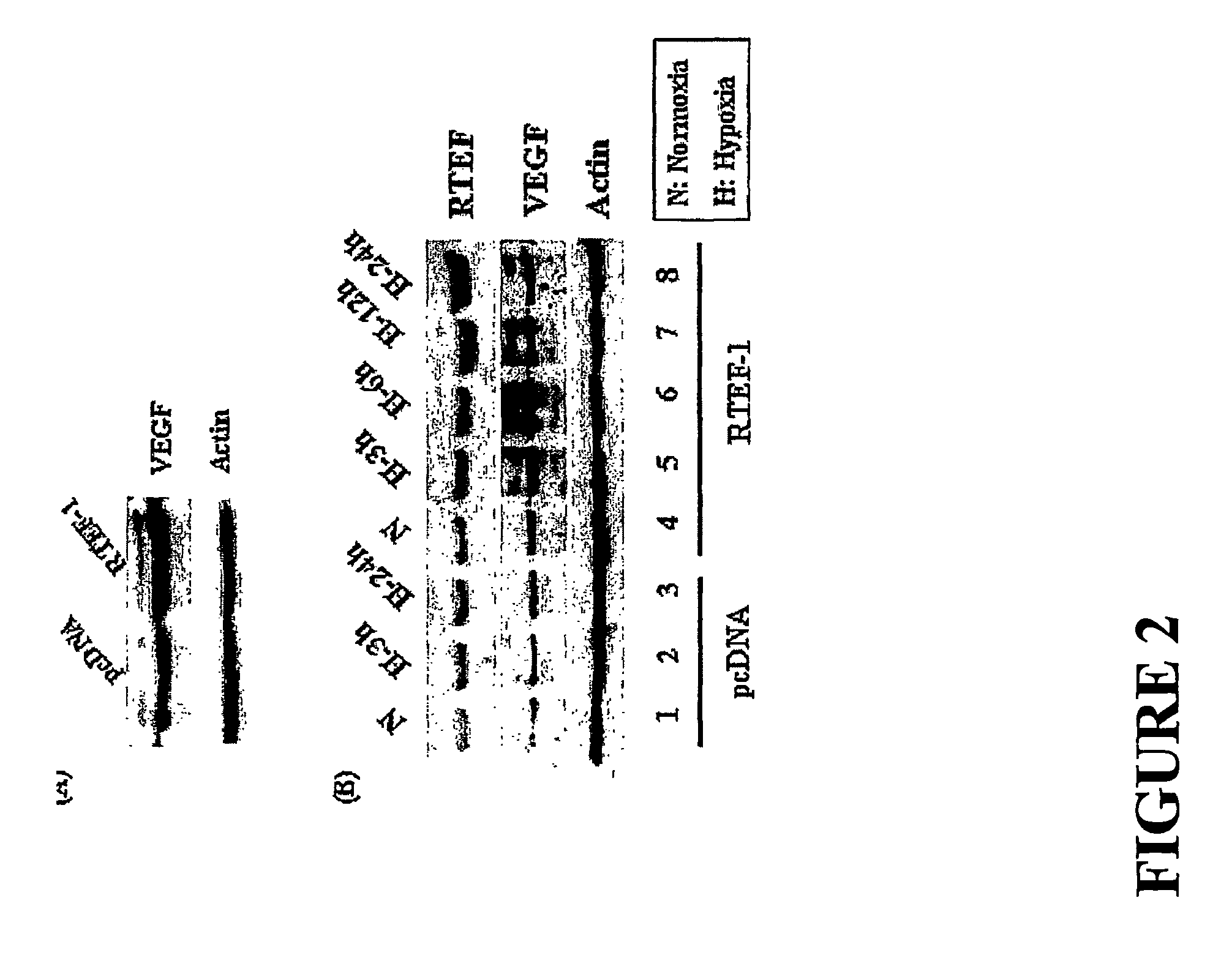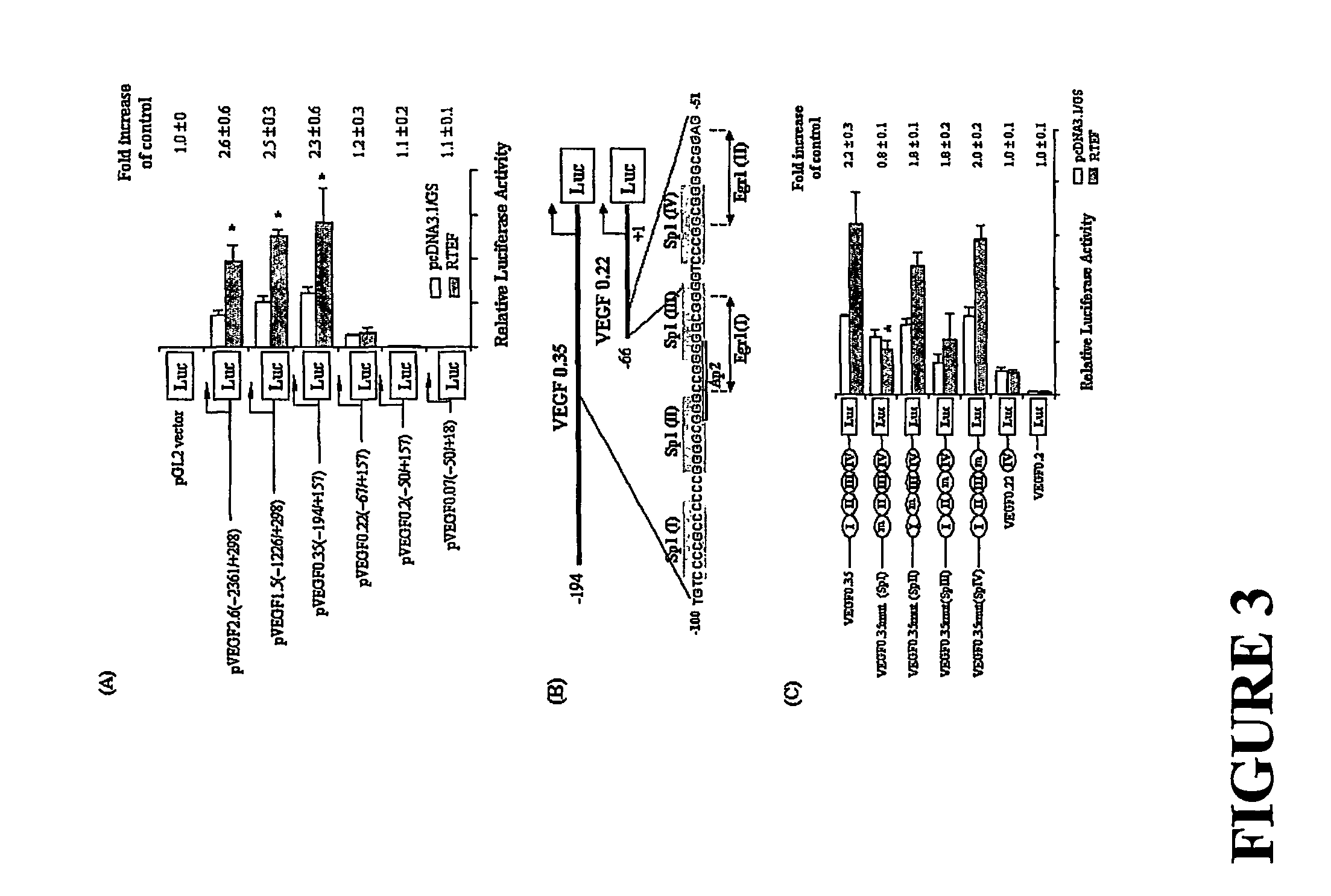Methods and compositions for treating conditions involving abnormal angiogenesis
an angiogenesis and composition technology, applied in the field of methods and compositions for treating conditions involving abnormal angiogenesis, can solve problems such as increasing angiogenesis in mammals, and achieve the effects of reducing, treating, or preventing hypoxic or ischemic conditions, and increasing angiogenesis
- Summary
- Abstract
- Description
- Claims
- Application Information
AI Technical Summary
Benefits of technology
Problems solved by technology
Method used
Image
Examples
example 1
RTEF-1 is Inducible in Response to Hypoxia
[0149]Based on results we obtained from DNA microarray experiments, we found that the expression of RTEF-1 is increased three times in endothelial cells cultured under hypoxic conditions. To confirm this observation, we next performed Northern blot analysis to measure the time-dependent level of RTEF-1 mRNA isolated from total RNA derived from bovine aortic endothelial cells (BAEC) cultured in hypoxia (2). FIGS. 1A and 1B show that RTEF-1 is induced by hypoxia and that such expression peaked about 6 hours following exposure to hypoxia.
[0150]To further understand the function of RTEF-1 under hypoxic conditions and to determine the target genes of RTEF-1 in endothelial cells, RTEF-1 was overexpressed in BAEC cells by transfection of RTEF-1 cDNA. VEGF was identified as a protein that was upregulated in BAEC cells transfected with and overexpressing RTEF-1 (FIG. 2A). VEGF expression was further increased under hypoxic conditions in the presence ...
example 2
VEGF is a Potential Target Gene for RTEF-1
[0152]Previous reports have suggested that RTEF-1 transcriptional regulation is mediated through the M-CAT element which contains the following consensus sequence: CATN(T / C)(T / C)(Farrance et al., (1992) J. Biol. Chem. 267: 17234-17240). Searching for this sequence of VEGF promoter region revealed the existence of numerous M-CAT-like elements. Accordingly, we hypothesized that VEGF may be one of the target genes regulated by RTEF-1.
[0153]To investigate this hypothesis, the region of the VEGF promoter required for RTEF-1 regulation was determined in BAEC cells using a series of truncated VEGF promoter constructs (see FIG. 2). Overexpression of RTEF-1 in BAEC cells resulted in a greater than two-fold activation of the VEGF promoter activities in three different sequences of the VEGF promoter: VEGF 2.6 (−2361 / +298), VEGF 1.5 (−1226 / +298), and VEGF 0.35 (−194 / +157) promoter activity (FIG. 3A). However, deletion of the VEGF promoter sequence from ...
example 3
Dose-Dependent Upregulation of VEGF Expression by RTEF in BAEC Cells
[0154]The identified putative target region within the VEGF promoter for RTEF-1-mediated transcriptional activation was further analyzed by performing a dose-dependent induction of VEGF promoter activity by RTEF-1 in BAEC cells. To determine that RTEF-1 stimulates VEGF on its transcriptional level, the activities of a luciferase construct under the control of a VEGF promoter were measured. As shown in FIG. 4A, BAEC cells were transiently cotransfected with 300 ng of VEGF 0.35, and various doses of RTEF-1 and pcDNA 3.0, such that the total amount of DNA was 600 ng. As the level of RTEF increased, we observed a concomitant stimulation of VEGF 0.35 in BAEC, as determined by a 2.2+ / −0.3-fold increase in luciferase activity. Furthermore, RTEF-1 transactivated the VEGF promoter in a dose-dependent manner. In addition, compared with normoxia, exposure of BAECs cotransfected with VEGF promoter construct and RTEF-1 cDNA to h...
PUM
| Property | Measurement | Unit |
|---|---|---|
| temperature | aaaaa | aaaaa |
| pH | aaaaa | aaaaa |
| pH | aaaaa | aaaaa |
Abstract
Description
Claims
Application Information
 Login to View More
Login to View More - R&D
- Intellectual Property
- Life Sciences
- Materials
- Tech Scout
- Unparalleled Data Quality
- Higher Quality Content
- 60% Fewer Hallucinations
Browse by: Latest US Patents, China's latest patents, Technical Efficacy Thesaurus, Application Domain, Technology Topic, Popular Technical Reports.
© 2025 PatSnap. All rights reserved.Legal|Privacy policy|Modern Slavery Act Transparency Statement|Sitemap|About US| Contact US: help@patsnap.com



